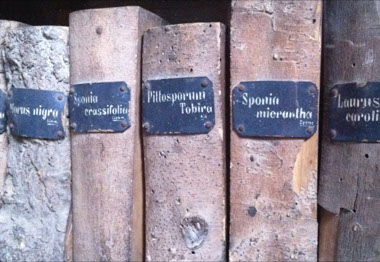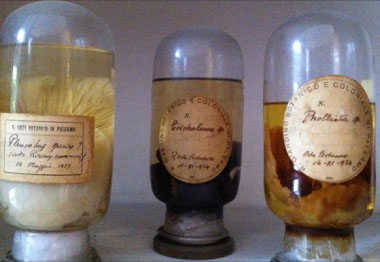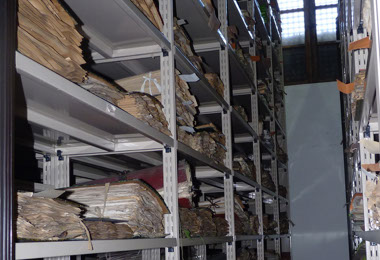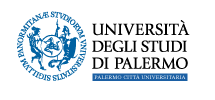Palermo Botanical Garden's Herbarium Mediterraneum (PAL)
The Palermo Botanical Garden's Herbarium (acronym PAL) was founded at the beginning of the 19th century. Its collections (vascular plants, ferns, mosses, liverworts, algae, fungi and lichens) come from Sicily as well as many other parts of the world, including Australia, Africa, Central and South America, and Europe.
The Herbarium contains an interesting collection of dried fruit (Carpoteca), seeds (Spermoteca), wood samples (Xiloteca), and numerous fruits preserved in alcohol, dating back to the early 20th century.
The current Herbarium was developed by combining the Generale and Siculo Herbariums, which were originally separate. Their respective collections were estimated to include around 200,000 (Generale) and 60,000 (Siculo) dried specimens. Today, following the addition of new collections and acquisitions, the Herbarium's total collection reaches close to 400,000 specimens.
The material taken from the Siculo herbarium mainly consists of the phanerogamic and cryptogamic collections of Vincenzo Tineo (1791-1846) and Agostino Todaro (1818-1892). There are also the findings of Bianca, Bivona-Bernardi, Borzì, Gasparrini, Gibelli, Gussone, Heldreich, Huet du Pavillon, Inzenga, Lacaita, Lehmann, Lojacono, Mandralisca, Minà Palumbo, Nicotra, Parlatore, Porcari, Ross, Sommier, Sorrentino, Strobl and Terraciano. There is also a collection of 12,000 specimens recently donated by Girolamo Giardina (1943-2006). The cryptogamic collections include approximately 2,000 algae, 1,600 lichens, 4,700 bryophytes and 1,000 micromycetes and macromycetes. Most of the algae collection comes from the Mediterranean, the result of exchanges made by Antonino Borzì during the 19th century. The Sicilian Lichenology collection has 100 specimens, mostly collected by Lanza on the western slopes of Madonie during the beginning of this century. Also, there are approximately 1,500 specimens taken from Generale Herbarium, collected in the last century, coming from collections such as the Italian Cryptogamic Herbarium and those of Mougeot, Carestia and Baietto.
The Herbarium bryophyte collection is quite modest, containing only 107 specimens (15 liverworts and 92 mosses) belonging to 64 species. It is mainly made up of material collected by Tineo, Bivona Bernardi, Lojacono, Todaro and Nyman from the Madonie, Ficuzza, and Palermo mountains and around Messina.
The Herbarium's Bryological collection is more substantial, containing approximately 4,700 specimens, coming from the collections of Todaro, Husnot's collection of Gallic mosses, from the Italian cryptogamic herbarium, and a large quantity of specimens sent by U. Martelli, G. Weber, M. Schultze, A. von Wegener, S. O. Lindberg, F. Schultz, C. Warnstorf, among others.
The most significant Mycologic collections are from V. Beltrani, Passerini, Caldesi, Rabenhorst and de Thumen.
The Herbarium, along with many other important herbariums from across Europe and the world, is currently establishing a database where images of the specimens will be stored.



Orto Botanico di Palermo
Università degli Studi di Palermo
Via Lincoln, 2
90133 PALERMO, Italia
Codice Fiscale 80023730825, Partita IVA 00605880822
091 23891236 - 091 23891249
ortobotanico@unipa.it

